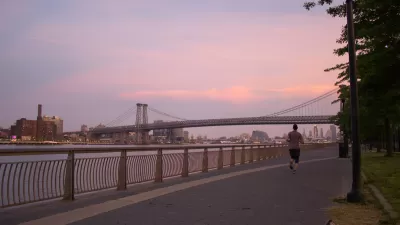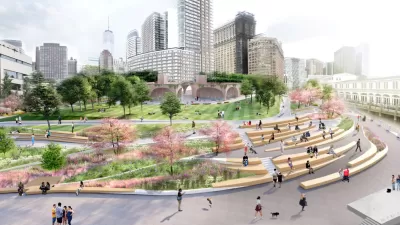Extreme events tend to expose the true weaknesses and strengths of a place and its people. In the same way that Sandy revealed the shortcomings in NY's physical infrastructure, it has shown the growing chasm in the city's economic infrastructure.
Few of the New York metro area's 19 million residents have gone untouched by superstorm Sandy, but as David Rohde contends, "[the storm] humbled some more
than others in an increasingly economically divided city." In Manhattan, for instance, a decade of increasing disparity between rich and poor has resulted in levels of inequality that "rivals parts of sub-Saharan Africa."
"Divides between the rich and the poor are nothing new in New York,
but the storm brought them vividly to the surface," observes Rohde. "There were residents
like me who could invest all of their time and energy into protecting
their families. And there were New Yorkers who could not."
"Those with a car could flee. Those with wealth could move into a
hotel. Those with steady jobs could decline to come into work. But the
city's cooks, doormen, maintenance men, taxi drivers and maids left
their loved ones at home."
"The storm affected the affluent as well...But the city's heroes were the tens of thousands of policemen,
firefighters, utility workers and paramedics who labored all night for
$40,000 to $90,000 a year. And the local politicians who focused on
performance, not partisanship, such as New Jersey Governor Chris
Christie, New York Mayor Michael Bloomberg and Newark Mayor Corey
Booker."
FULL STORY: The Hideous Inequality Exposed by Hurricane Sandy

Planetizen Federal Action Tracker
A weekly monitor of how Trump’s orders and actions are impacting planners and planning in America.

Restaurant Patios Were a Pandemic Win — Why Were They so Hard to Keep?
Social distancing requirements and changes in travel patterns prompted cities to pilot new uses for street and sidewalk space. Then it got complicated.

Map: Where Senate Republicans Want to Sell Your Public Lands
For public land advocates, the Senate Republicans’ proposal to sell millions of acres of public land in the West is “the biggest fight of their careers.”

Maui's Vacation Rental Debate Turns Ugly
Verbal attacks, misinformation campaigns and fistfights plague a high-stakes debate to convert thousands of vacation rentals into long-term housing.

San Francisco Suspends Traffic Calming Amidst Record Deaths
Citing “a challenging fiscal landscape,” the city will cease the program on the heels of 42 traffic deaths, including 24 pedestrians.

California Homeless Arrests, Citations Spike After Ruling
An investigation reveals that anti-homeless actions increased up to 500% after Grants Pass v. Johnson — even in cities claiming no policy change.
Urban Design for Planners 1: Software Tools
This six-course series explores essential urban design concepts using open source software and equips planners with the tools they need to participate fully in the urban design process.
Planning for Universal Design
Learn the tools for implementing Universal Design in planning regulations.
Heyer Gruel & Associates PA
JM Goldson LLC
Custer County Colorado
City of Camden Redevelopment Agency
City of Astoria
Transportation Research & Education Center (TREC) at Portland State University
Camden Redevelopment Agency
City of Claremont
Municipality of Princeton (NJ)





























